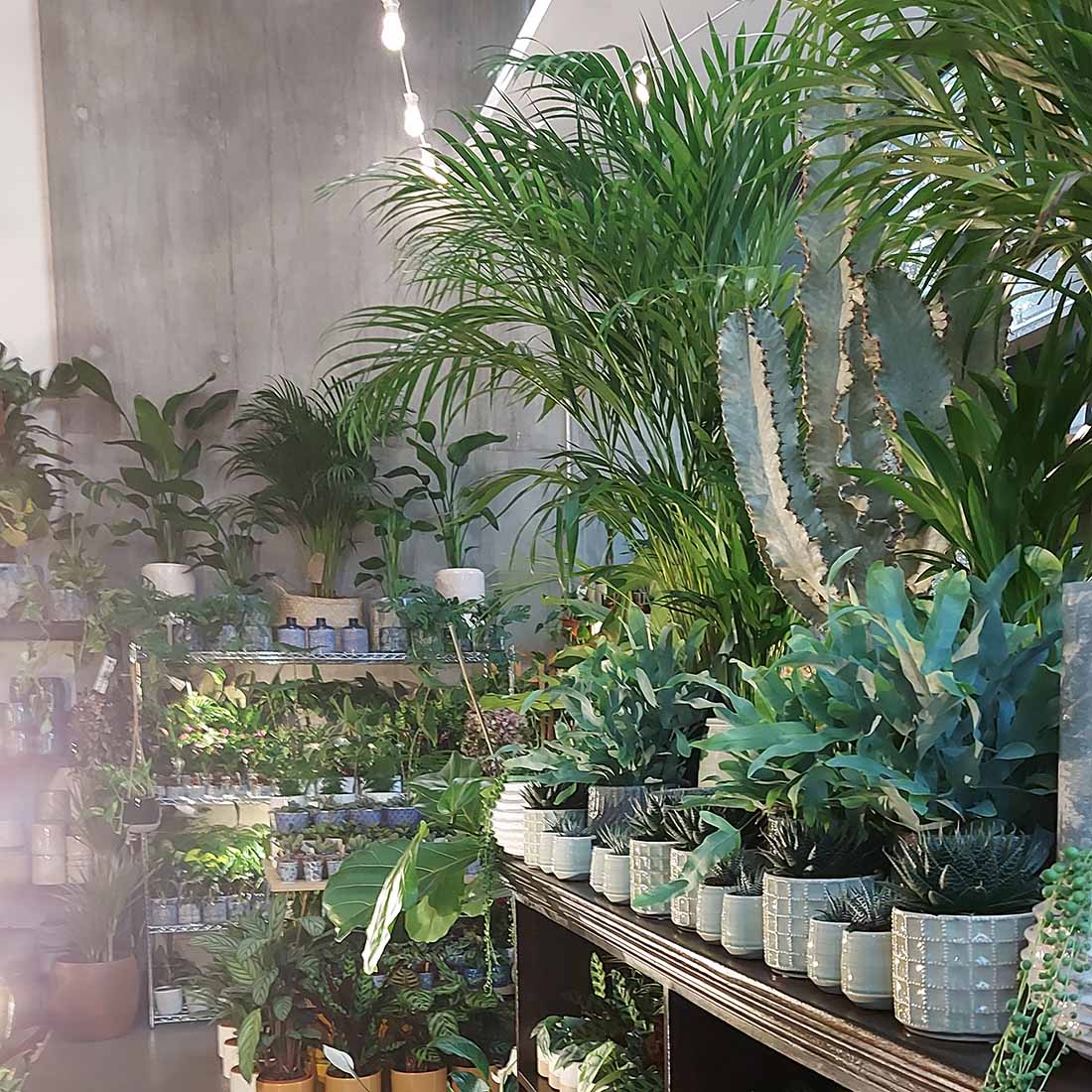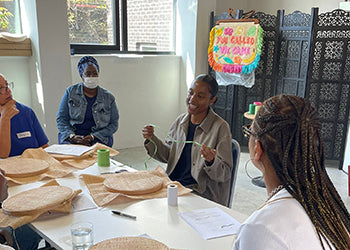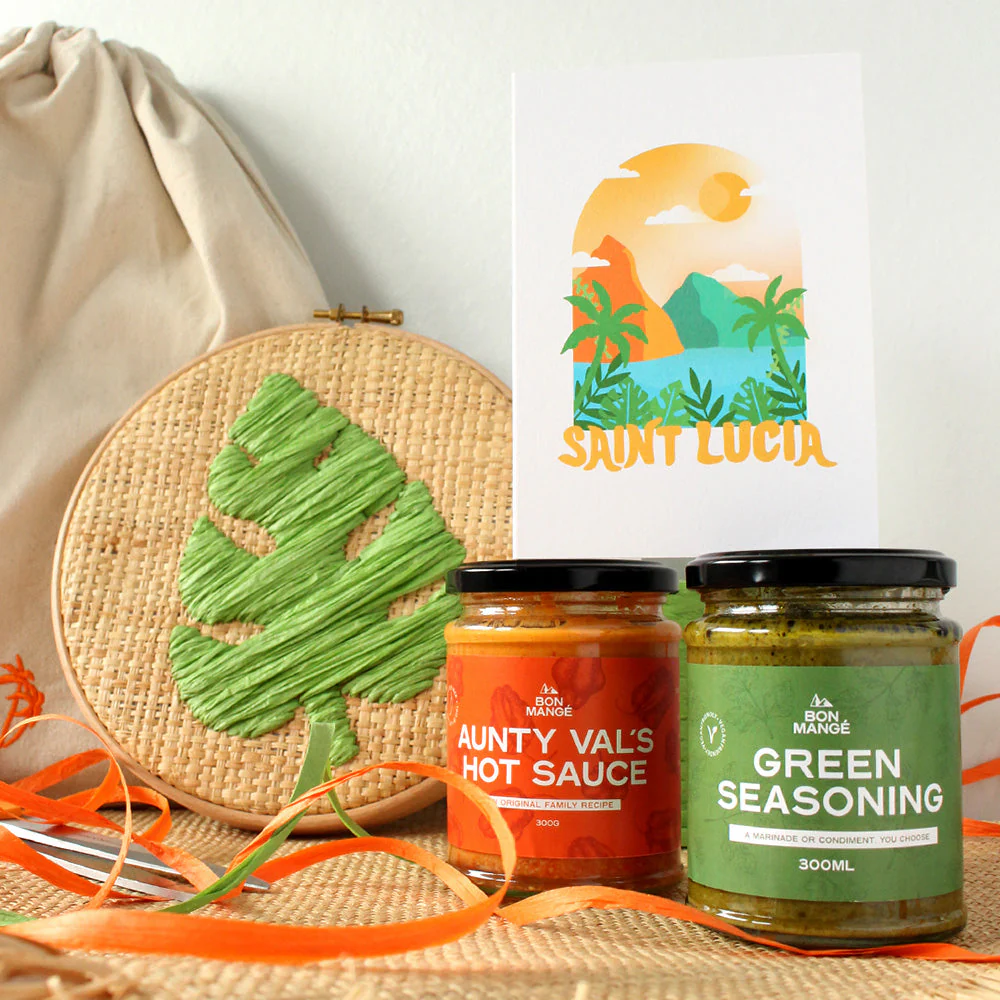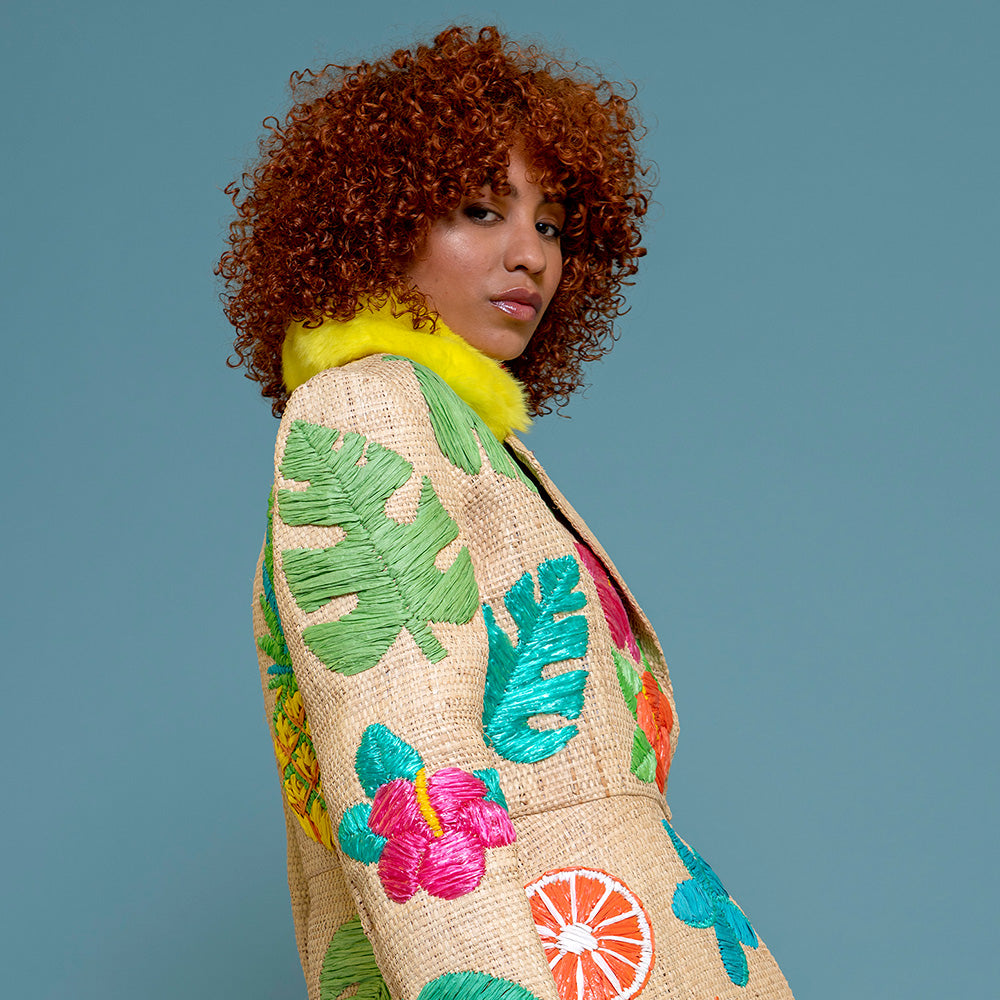
Do you often daydream about being on a tropical Caribbean island, surrounded by lush greenery and vibrant flowers? Well, if you’re not able to hop on a plane to the islands right now, you can bring a little slice of paradise into your own home by incorporating indoor tropical plants. Not only do they add a touch of tropical beauty to your space, but they can also help boost your wellbeing by helping to reducing stress levels. But with so many options available, it can be overwhelming to choose the right tropical plants for your home. That's why we've created this guide to help you select the best indoor tropical plants for your space, whether you have a green thumb or not. We'll take you through what you need to consider before choosing an indoor tropical plant, a list of some indoor tropical plants for you to choose from with their care requirements plus tips for placement and styling. So, let's bring the tropics inside and create an oasis in your own home!
The Benefits of Indoor Tropical Plants
Indoor plants are thought to have numerous benefits for both physical and mental health. Although, according to the The Royal Horticultural Society, the research suggests that the largest benefits are for our wellbeing and productivity. Some of the psychological wellbeing benefits include:
Helping improve our mood
Increasing productivity (particularly in offices)
Reducing stress levels
Some physical health benefits of indoor plants are through to include reducing blood pressure, fatigue and headaches. However, it’s important to note that more research needs to be done to investigate the effects of different plant species.
In addition to these possible health benefits, indoor tropical plants can add a touch of beauty, tranquility and a pop of colour to help decorate your space. Whether you're looking to create a relaxing oasis in your bedroom or a vibrant, tropical atmosphere in your living room, indoor tropical plants can help to transform any space into a serene and welcoming environment.
Factors to Consider When Choosing the Best Indoor Tropical Plants
When choosing the best indoor tropical plants for your home, it’s best not to choose just on appearance alone as there are several other factors to consider. Here are some things to keep in mind:
Light
Consider the amount of light available in the area where you plan to place your plants. Some indoor tropical plants require more light than others, so be sure to choose plants that are suited to the lighting conditions in your home.
Space
Consider the amount of space you have available for your plants. Some indoor tropical plants can grow quite large, while others are more compact and better suited to small spaces.
Temperature & Humidity
Research the origin of the houseplant you would like in your home. This will help you work out how best to care for it. Temperatures in our homes can fluctuate drastically throughout the year with changing seasons so it’s another thing to consider when deciding on the location where you want to place your plant, right next to the radiator or a cold draught may not be a good spot. Plus, if you want to place a plant in your bathroom, where it’s probably more humid than other areas of your home, research which plants benefit most from moist air. But also make sure that there’s a natural light source in your bathroom, as plants need light to survive.
Maintenance
Consider your level of experience with plant care and the amount of time you have available to devote to plant maintenance. Some indoor tropical plants are low-maintenance and require little upkeep, while others require more attention and care. If you are someone that goes away a lot, or just forgetful when it comes to watering your plants drought-tolerant plants such as cacti and succulents may be a better fit for you.
Toxicity
Some indoor tropical plants can be toxic to pets and children. If you have pets or young children in your home, be sure to choose plants that are safe for them.
By considering these factors, you can choose indoor tropical plants that are well-suited to your home and your lifestyle.
List of Indoor Tropical Plants
Monstera Deliciosa
Also known as the Swiss cheese plant, monstera are amazing tropical houseplants with big glossy lush green leaves that are beautifully distinctive. It is one of the most well-known and popular indoor tropical plants.
Care requirements: Monstera are relatively simple to care for. These plants are climbers with aerial roots so need to be trained up mossy poles to mimic the trees they cling to in the wild. It should be watered when the top layer of compost feels dry to the touch.
Placement: Monstera plants prefer high humid conditions with bright, indirect light. They usually do well in a steamy bathroom, kitchen or living area.
Styling: With their beautifully lush green leaves, monstera plants look great in rooms with minimalist decor. Its graphic leaves contrast beautifully against white, light beige and cream walls and next to furniture with a light wooden look. Find a rattan or woven basket to display your plant in.

Areca Palm
Also known as gold palm, butterfly palm or house palm, the Areca Palm naturally occurs in the tropical forest of Madagascar, where it is used to a climate with high humidity.
Care requirements: This plant needs regular waterings - try to make sure that the palm's soil remains slightly moist. To find out if it need’s watering just check the top two inches of soil with your finger, if it comes out dry, it's time to water. This plant can also benefit from being fed with a general houseplant fertiliser.
Placement: Place in a bright location, but never keep it too long in direct sunlight. Be sure to keep it out of midday sun, as this can scorch the leaves.
Styling: This is an elegant and stylish plant that can grow quite large making it a beautiful feature piece. They look amazing in neutral spaces, try placing it in the corner of a room surrounded by smaller plants. Or find a stylish plant pot stand to display it on its own and show off its arching stems and palm-like leaves.

Ananas Nanus
If you love pineapples and you fancy growing your own mini tropical pineapple in your home, this is the indoor tropical plant for you! This plant grows an ornamental small-scale fruit (although it’s not edible). This show stopping plant is an instant conversation starter and adds tropical flair to any space. Pineapples were once considered one of the most luxurious and exotic fruits in the world, and were a status symbol with wealthy aristocrats. Add a touch of luxury to your own home with a pineapple plant!
Care requirements: The soil for this plant needs to dry out before you water it again- to much water in the soil will cause the pineapple plant to rot.
Placement: It will thrive in a warm room, like kitchens or conservatories, in bright position that gets plenty of natural sunlight and warmth.
Styling: This plant makes the perfect centrepiece for a kitchen, dining room or lounge.

Ficus Elastica
Ficus elastica is also known as the rubber plant. It is white is an unusual-looking plant with large, oval-shaped leaves with a rich green colour. It can grow quickly but it may not be the easiest plant for beginners as it's not very forgiving. It’s important to note that this plant is toxic to cats and dogs.
Care requirements: This plant needs adequate light, moisture, and warmth. To know when to water, check the top 2 inches of soil with your finger - if it comes out dry, it's time to water. Make sure you don't leave the plant standing in water, so make sure it’s in a pot that allows the water can drain away.
Placement: Place your plant in a bright position where it gets consistent light and warmth. As it's a bit fussier than other houseplants, it likes things staying consistent. Keep it away from radiators and cold draughts.
Styling: Small ficus elastic plants looks great on a desk or in a work space. Larger plants work great in the corner of a room, and will complement neutral and some shades of green walls paint.

Anthurium
Known for it beautiful glossy red foliage (the red petals are actually leaves), anthuriums are stunning centrepiece plants and require surprisingly simple care - despite their striking appearance. They are also known as flamingo flowers or laceleaf plants and are actually toxic to both pets and people, especially children, so make sure you keep it in a safe place.
Care requirements: Be sure to water when the top 2 inches of soil are dry. Try to mist this plant every 2-3 days in spring and summer to recreate the humid parts of the world this plant is from.
Placement: Keep in a warm spot where it gets consistent light - if it looks like it is not growing very much it could be a sign your plant needs more light.
Styling: A striking plant that can be the centrepiece of any room - particularly a living or dining room. It could look lovely in complimentary plant pot - maybe a pink or red colour to go with the red foliage. It adds a good amount of interest to a minimalist room, but also sits beautifully in a room with lots of black accents as the red colour stands out.

Kentia Palm
The Kentia palm is an incredibly popular houseplant, originating from Lord Howe Island, a tiny island off the east coast of Australia. This beautiful plant is a slow grower and it that can take decades to reach its maximum 10 metre height.
Care requirements: This pant has simple needs - water lightly and mist regularly to keep its leaves fresh and green. It will also appreciate a feed with liquid fertiliser once per month in spring and summer.
Placement: Place it in a spot with lots of bright light, but not harsh direct sun.
Styling: Adds a stunning tropical feel to any room. Could look lovely in a woven basket or complimenting rattan furniture, surrounded by colourful tropical art prints.

Banana Leaf Plant
A majestic and impressive houseplant, banana plants are one of the easier tropical indoor plants to grow.
Care requirements: Keep the soil of this plant evenly moist and don’t let it dry out, they require a lot of water to sustain their massive leaves but don’t let the roots sit in water, as this will kill it. Try to mist often to improve humidity around the plant. Keep the soil evenly moist, and avoid letting it dry out.
Placement: Indoor banana plants need to be positioned in a bright room but without exposure to direct sunlight. The plant benefits from being place in a high humidity room.
Styling: This is a big, bold statement tropical indoor plant that compliments rattan furniture, wooden furniture and woven baskets. Try placing in rooms with with neutral walls - colours like peaches, pinks, yellows may also work well.

Orchids
If you're up for a bit more of a challenge, this indoor tropical plant requires a bit more care and attention. Orchids are a beautiful and exotic indoor tropical plant. There are around 25,000 types of orchid, so there’s plenty of styles and colours to choose from. This classic tropical indoor plant comes in an array of vibrant colours and make glamorous yet low-maintenance houseplants.
Care requirements: Overwatering is the most common way to kill an orchid, so let the plant dry out between waterings and never leave them standing in water, as this can rot the roots. Mist your orchid’s leaves every few days avoiding the flowers as the petals can become marked by water. Tap water can be harmful for these plants, so use boiled water or rainwater where you can. It benefits from regular fertilisation during the spring and summer, and won’t need repotting often.
Placement: Orchids require bright, indirect light.
Styling: As they come in an array of vibrant colours, they can sit beautifully in differently decorated rooms. They make a sophisticated centrepiece in a living area, dining room or office.

Quick Tips for Caring for Indoor Tropical Plants
Here are some quick additional tips for caring for your indoor tropical plants. By following these tips, you can help your indoor tropical plants to thrive and flourish.
- Gently dust plants regularly to keep their leaves clean and healthy.
- Prune your plants as needed to remove dead or damaged foliage (following guideline for each individual plant).
- Keep an eye out for pests which can be common in indoor plants.
- Repot your plants as needed to ensure they have enough space to grow (following guideline for each individual plant).
Creating Your Own Indoor Tropical Paradise
Indoor tropical plants are a great way to bring a touch of Caribbean paradise into your home. This is list is not exhaustive, so you’ll be sure to find the perfect indoor tropical plant for your home and lifestyle by following the tips above. By following our care tips and considering the factors outlined in this guide, you can create your own indoor tropical paradise and enjoy the beauty and benefits of these stunning plants.
Sources and Further Reading:
- Tropical plants – 10 exotics that grow happily indoors. Read more
- Houseplants: to support human health. Read more
- What to consider when choosing houseplants. Read more
- Aracea Dypsis Areca Palm. Read more
- Pineapple plant care. Read more
- Ficus elastica: beginner indoor grow tips. Read more
- Kentia Palm. Read more
- Banana leaf plant. Read more
- Orchid. Read more
- Orchid care. Read more
- Photo by Annie Spratt on Unsplash
- Photo by Jennifer Dries on Unsplash
- Photo by Alexandra Nosova on Unsplash










